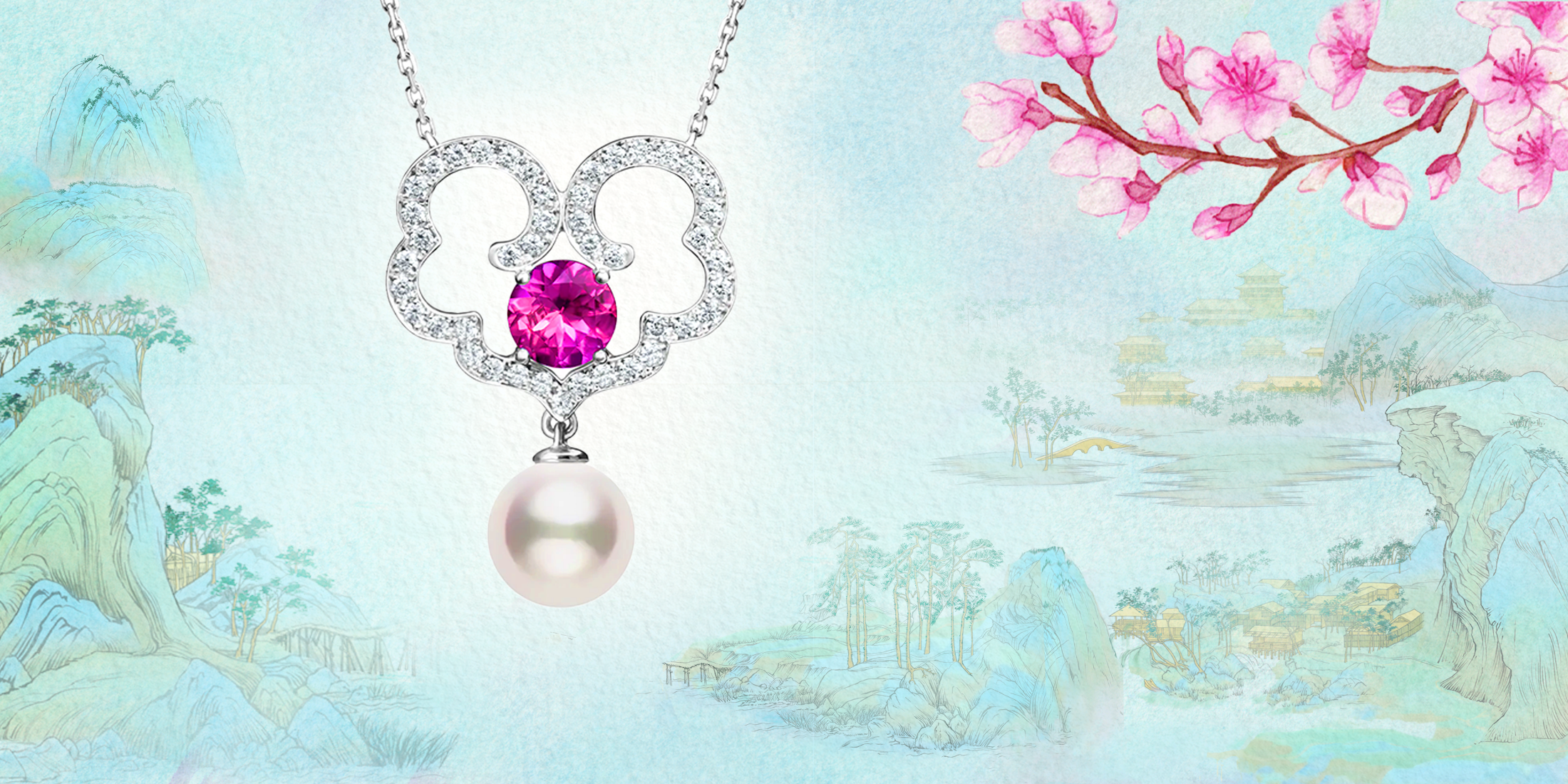
The Eternal Brilliance and Mythology of Diamonds: April’s Birthstone
Shen Yun Collections
Diamond is not only the hardest natural substance on Earth but also one of the most revered both in the East and the West. It has both spiritual and cultural dimensions that are lit up by its translucent and highly fortified structure—a structure that gives off a seemingly eternal brilliance and offers a seemingly endless resilience. Let’s take a closer look at diamond.
A Symbol of Indestructible Power and Enlightenment
In Chinese culture, diamonds are known as jīngāng (金剛). The term combines two characters: the first, jīn (金) is a character that on its own literally means gold or metal and symbolizes purity and incorruptibility; the second, gāng (剛) represents unyielding strength and resilience. Therefore, this Chinese name jīngāng well reflects the diamond’s clean appearance and unbreakable nature.
In the Buddhist tradition, diamond is closely tied to the Vajra, a sacred weapon that embodies both unyielding strength and transcendent wisdom. The Diamond Sutra, one of Buddhism’s most revered texts, compares a diamond’s hardness to ultimate truth—unshaken by illusion or worldly turmoil. Ancient Chinese warriors and spiritual practitioners believed diamonds brought both protection and enlightenment, contributing to a legacy of the diamond as a symbol of inner and outer strength.
The Thunderbolt of Power and Purity
In ancient Indian mythology, diamonds were linked to Indra, the king of the gods and his weapon, the Vajra—a thunderbolt of immense force and divine authority. The Sanskrit word Vajra (वज्र) means both “diamond” and “thunderbolt,” signifying a gem that channels cosmic energy and shatters illusion.
A Warrior’s Talisman
In ancient Greek mythology, diamonds were believed to be the tears of the gods or fragments of fallen stars. Warriors carried them into battle, convinced they bestowed invincibility. The Romans also revered diamonds, associating them with Mars, the god of war. They were viewed as protective charms against danger and misfortune.
Meaningful Cultural Icon Today
Today, for many people, diamonds are an integral part of the marriage tradition. They are seen as an essential feature of the engagement ring. The American Gem Society traces this custom back to Archduke Maximillian of Austria. In 1477, he commissioned the first known diamond engagement ring for his fiancée, Mary of Burgundy. This sparked a trend of diamond rings, not just for marriage but to display beauty and refined culture, among Europe’s noble Lords and Ladies.
Shen Yun Collections’ Finest Creations
The Fine Jewelry Collection captures the divine essence of the legendary phoenix, a celestial bird symbolizing renewal and grace. Inspired by Phoenixes of the Sapphire World from Shen Yun, this collection showcases luxurious diamonds set in ethereal wing-like designs, evoking the phoenix’s heavenly beauty as it soars between worlds.
 Similarly, The Timeless Blessings Necklace embodies the cherished ruyi motif—an ancient Chinese symbol of peace and prosperity. Set in 18kt white gold and adorned with a brilliant medley of natural diamonds, Tanzanite, and a fine Akoya pearl, this exquisite piece recalls the clouds that carry one’s wishes toward fulfillment.
Similarly, The Timeless Blessings Necklace embodies the cherished ruyi motif—an ancient Chinese symbol of peace and prosperity. Set in 18kt white gold and adorned with a brilliant medley of natural diamonds, Tanzanite, and a fine Akoya pearl, this exquisite piece recalls the clouds that carry one’s wishes toward fulfillment.
Discover the ethereal beauty of diamonds in The Heavenly Phoenix Fine Jewelry Collection and The Timeless Blessings Necklace, where ancient symbolism meets masterful craftsmanship.

























